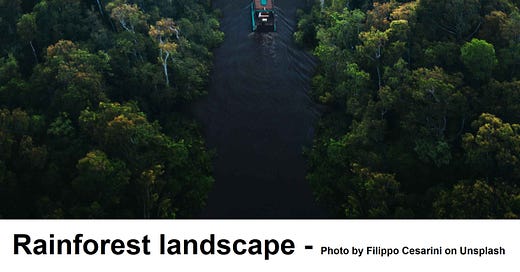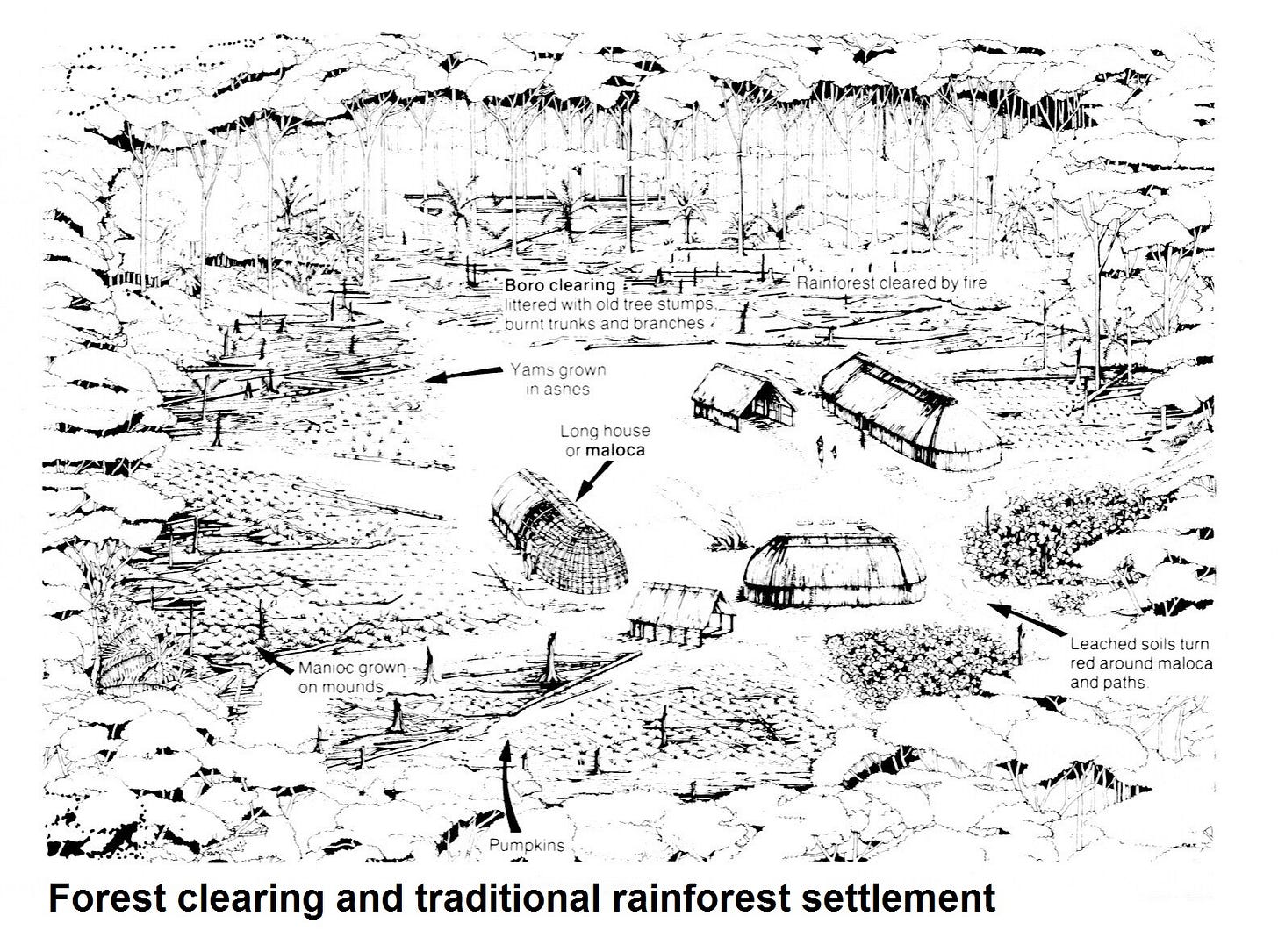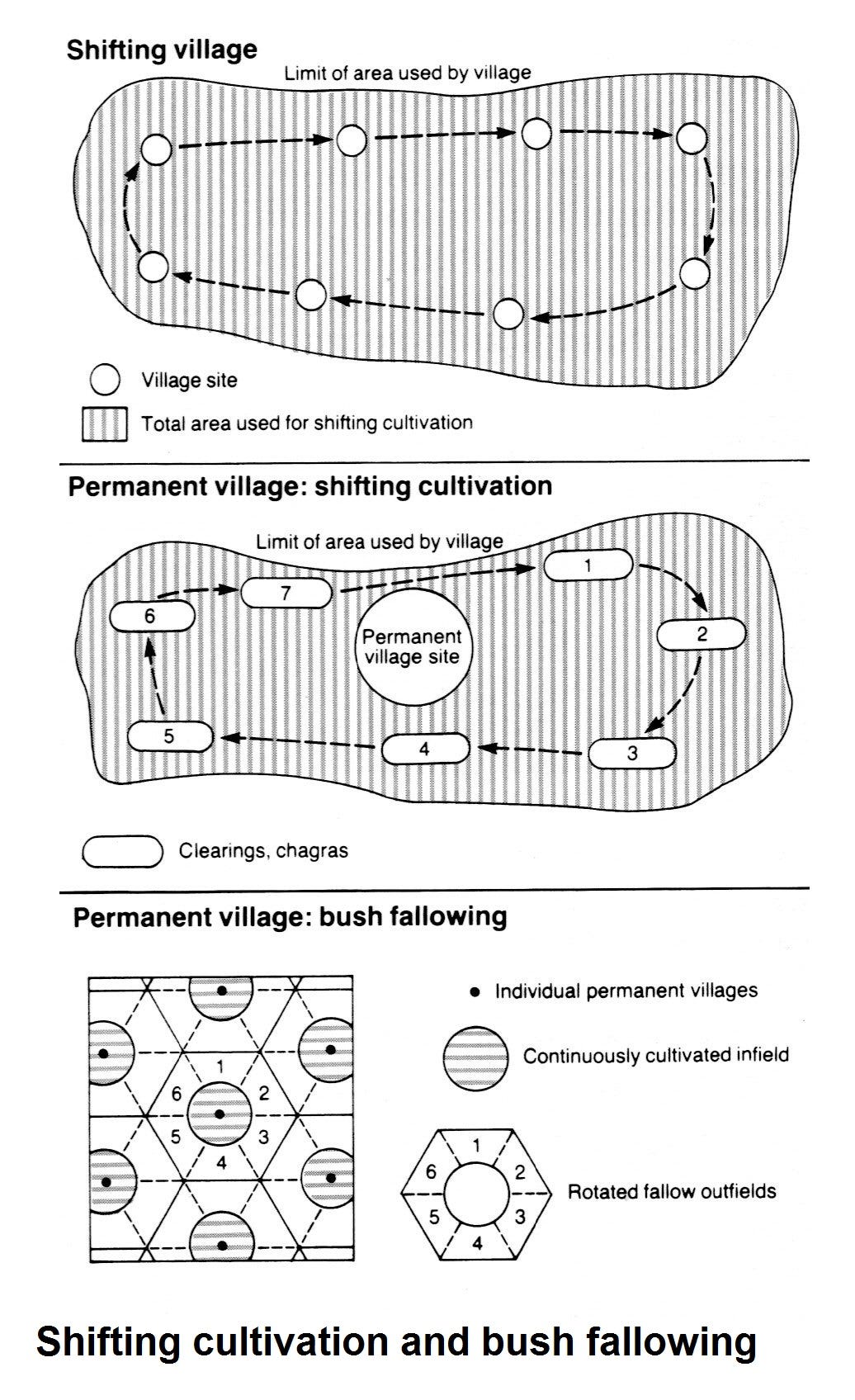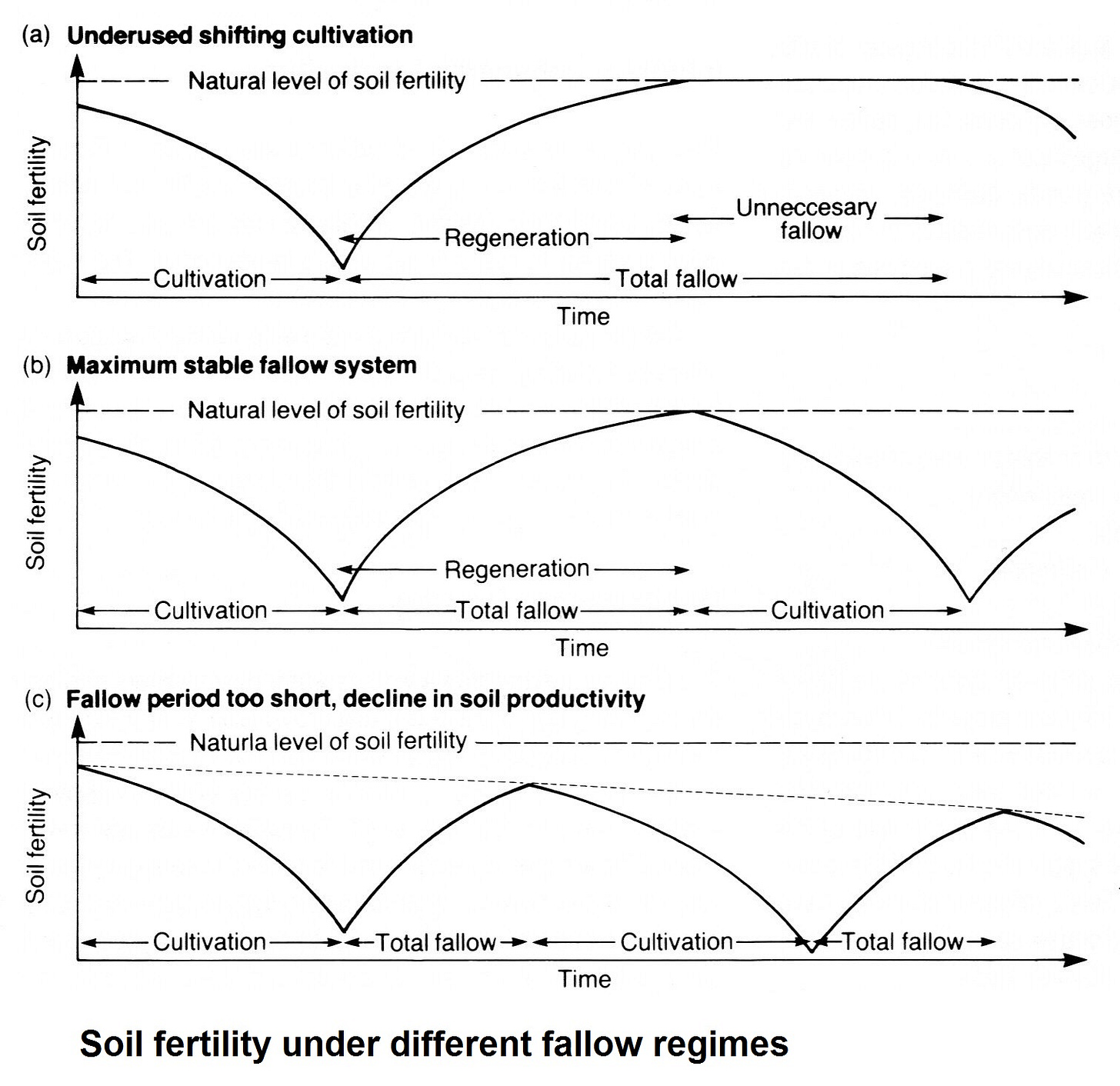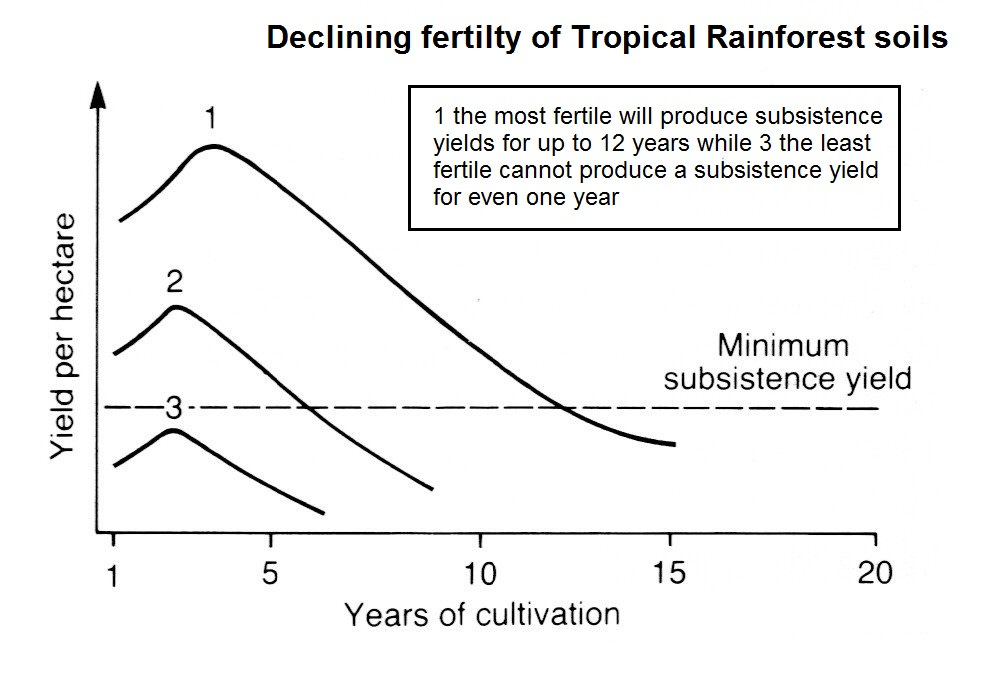The Impact of Transitioning from Shifting Cultivation to Sedentary Agriculture in the Tropics
Shifting Sands
The traditional practice of tropical shifting cultivation, where plots are cultivated for a short period and then fallowed for years, is undergoing a transformation in some regions. This shift towards sedentary agriculture, where land is farmed permanently, brings significant changes to farming methods, the environment, and settlement patterns.
Impact on Farming Methods:
Increased Use of Inputs: Sedentary agriculture often necessitates the use of fertilisers and pesticides to maintain soil fertility in the absence of fallow periods. This can lead to a dependence on external inputs and potentially higher production costs [1].
Introduction of New Crops: Permanent cultivation allows for the introduction of cash crops or perennial crops like coffee or rubber. These may require different management techniques compared to traditional subsistence crops [2].
Mechanisation: Larger, permanent fields can facilitate the use of machinery for planting, harvesting, and other tasks, potentially increasing efficiency but also potentially displacing labor [3].
Impact on the Environment:
Deforestation: The pressure to convert more land to permanent agriculture can lead to deforestation, disrupting ecosystems and biodiversity [4].
Soil Degradation: Continuous cropping without fallow periods can deplete soil nutrients and organic matter, leading to reduced fertility and erosion if not properly managed [5].
Water Resources: Sedentary agriculture often requires more intensive irrigation, potentially straining freshwater resources, especially in drier regions [6].
Impact on Settlement:
Sedentariastion: Shifting cultivation is often associated with mobile communities. The transition to permanent agriculture can lead to the formation of permanent settlements, with potential changes in social structures and community dynamics [7].
Land Tenure: The shift can raise questions of land ownership and access, requiring clear policies to ensure equitable land distribution and prevent land grabbing [8].
References:
[1] The environmental and economic costs of fertilizer-intensive agriculture: by The Fertilizer Trap - The Brookings Institution
[2] Smallholders, cash crops and forest change in Southeast Asia: by P.M. Burgess et al. in Journal of Land Use Science
[3] The future of mechanization in Asian agriculture - Food and Agriculture Organization of the United Nations
[4] Environmental Impact of Deforestation: by National Geographic Society
[5] Soil degradation - Food and Agriculture Organization of the United Nations:
[6] Water scarcity and agriculture - Food and Agriculture Organization of the United Nations:
[7] Shifting Cultivation Societies and Environment in Southeast Asia: researchgate
Typically the above article answers the fairly common exam question below
In some parts of the world tropical shifting cultivation is changing into sedentary agriculture. Describe the impact this change is having on farming methods, the environment and settlement.


